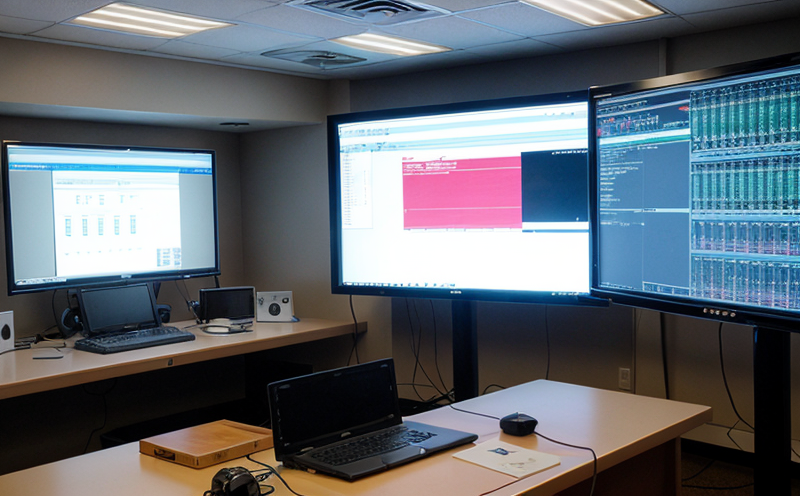EN 45545 Fire Resistance Testing of Control Cables
The European Standard EN 45545-1 specifies the fire resistance requirements for electrical and electronic equipment used in railway applications. One of its critical aspects is the fire resistance testing of control cables. This service ensures that control cables can withstand exposure to flames without compromising safety or functionality, making it indispensable for the railway industry.
The standard covers various types of control cables, including those used in signaling and communication systems. The fire resistance test evaluates how these cables perform under conditions that simulate real-world scenarios where they might be exposed to fire. Compliance with EN 45545-1 is mandatory for manufacturers aiming to supply products to the railway sector.
Control cables are integral components of railway signaling, safety systems, and communication networks. They transmit signals and data crucial for train operation and passenger safety. The test ensures that these cables remain functional and safe under extreme conditions, thereby protecting lives and infrastructure during fires or other emergencies.
The fire resistance testing process involves subjecting the cable to a specified temperature and duration of exposure in a carefully controlled environment. This section will delve deeper into the methodology used for this critical test.
Applied Standards
The European Standard EN 45545-1 is specifically designed to ensure that electrical and electronic equipment used in railway applications meets stringent fire safety requirements. This standard includes detailed specifications for the testing of control cables, signaling systems, and other critical components.
- EN 45545-1:2018 – Railways & Rolling Stock – Fire protection – Part 1: General requirements and test methods
- IEC 60332 – This international standard provides additional guidance on the ignition tests for cables.
The application of these standards ensures that manufacturers adhere to high-quality, safety-conscious practices. Compliance with EN 45545-1 is not only a regulatory requirement but also enhances product reliability and trustworthiness in the market.
Scope and Methodology
| Aspect | Description |
|---|---|
| Test Specimen | The control cable to be tested must meet the specified dimensions and insulation requirements outlined in EN 45545-1. The specimen is prepared by stripping the outer jacket, exposing the core conductors. |
| Temperature and Duration of Exposure | The cable is exposed to a flame at a temperature not less than 750°C for a duration of 30 minutes. The exposure time may be increased depending on the specific requirements of the application. |
| Testing Environment | The test must be conducted in a controlled environment, ensuring that all variables are consistent and replicable. This includes maintaining the specified temperature and humidity levels. |
| Inspection Criteria | After exposure to the flame, the cable is inspected for any signs of damage or degradation. The insulation should remain intact, and the core conductors must not be exposed. |
The rigorous testing process ensures that control cables meet the stringent fire safety requirements set forth by EN 45545-1. This standard is pivotal for maintaining the integrity of railway signaling and communication systems during emergencies or fires.
Industry Applications
The railway sector relies heavily on control cables that are reliable, safe, and capable of withstanding extreme conditions. The fire resistance testing process ensures that these cables meet the highest safety standards required by international regulations such as EN 45545-1.
- Signaling Systems: Control cables transmit critical signals for train operation and signaling systems. Ensuring their fire resistance is paramount to prevent failures during emergencies.
- Safety Systems: In the event of a fire, safety systems must function correctly without being compromised by heat or flames.
- Communication Networks: Reliable data transmission between train components and control centers is essential for maintaining operational continuity in the face of hazards.
The successful completion of fire resistance testing not only complies with regulatory requirements but also enhances the reputation of manufacturers, ensuring trust and reliability among clients and stakeholders.





